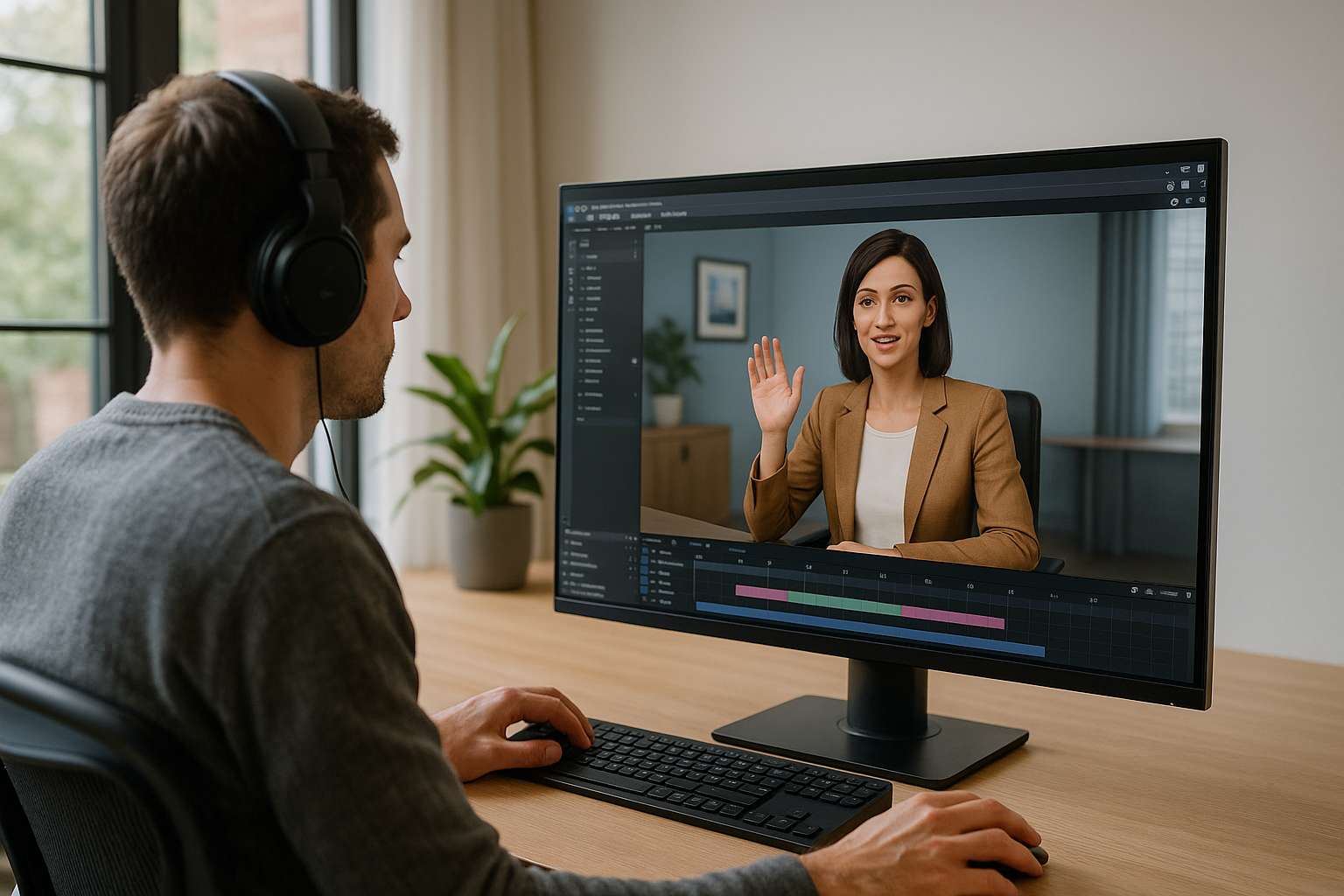Pedagogical Escape Game Benefits: Immersion, Engagement, Retention
A pedagogical escape game adapts the mechanics of escape rooms to serve a concrete training goal. Learners are immersed in a scripted mission—they investigate, make decisions, handle information, and collaborate under time constraints with limited clues. For a training manager, instructional designer, or HR specialist, key questions arise: Does this format genuinely improve on-the-job performance? Can it be deployed at scale without a technical team? How do I measure ROI and ensure integration into my LMS environment? The expression Pedagogical Escape Game Benefits summarizes the value proposition: immersion, engagement, and retention for real results.
Cognitive science and numerous user testimonials confirm it: deep immersion enhances mental presence, lasting engagement boosts motivation, and the lived experience combined with feedback strengthens memory retention. With a no-code authoring solution like VTS Editor (Serious Factory), these experiences are created without technical skills, customized for your specific roles, integrated into your LMS (SCORM export), and tracked in detail with VTS Perform (desktop, mobile, VR). To dive deeper into the format, check out our dedicated page on pedagogical escape games.
Maximum Immersion: The Strengths of Pedagogical Escape Games
A Story That Serves Your Objectives
Immersion stems from a credible mission, linked to targeted professional skills. A solid scenario clarifies the context (where, when, with whom), the trigger (incident, customer objection, safety alert), the stakes (risks and benefits), and observable success criteria. For onboarding, it might be “identify key contacts and prioritize three actions within 48 hours.” For compliance: “detect a GDPR violation in under 5 minutes and initiate the procedure.” These formulations guide both writing and assessment.
In VTS Editor, you structure the storyline using blocks like Talk (realistic dialogues with facial expressions), Message (briefings and instructions), Text Animation (intro/chapters), and Sequence (scene flow). Flags and Variables control unlocks (e.g., access a room after finding a clue), while Switch and Conditions manage branching paths. Using Variable Media prevents duplicate blocks when multiple visuals or documents depend on the situation.
Credible Scenery and 360° Media
The brain anchors information better within a rich and coherent environment. Alternate between wide shots and close-ups on key elements. A 360° shop environment lets you observe a checkout line, salesperson posture, and legal signage. A close-up of a cash register, using Decor Media, then guides the action.
From a technical standpoint, favor 1280×720 video resolution for smooth playback and use the Sound block for ambient crossfade (open office, alarm, phone). In 360° scenes, Force 360 directs the camera toward a point of interest; Freeze 360 temporarily locks rotation to focus attention. Foreground displays a priority visual (e.g., alert, evacuation map) in front of characters; Video sets the context or showcases a testimony. For cognitive load, rely on Mayer’s multimedia theory principles to focus attention without overload (reference).
Natural Interactions, Not Artificial Clicks
An escape game isn’t a “gamified” slideshow—it’s a space for meaningful actions. Vary cognitive gestures. Exploration via Clickable Zones and Decor Interaction invites searching a desk, opening a drawer, zooming in on a plan. Decision-making, using Phrase Choice, Quiz, or True/False, simulates customer interaction, safety trade-offs, or ethical dilemmas. Manipulation, through Drag & Drop, Matching, or Text/Number Fields, supports rearranging processes, matching risks to solutions, entering thresholds.
Design progressive micro-challenges, limit options (three to five relevant ones), and offer graduated clues. In VTS Editor, Open Resource instantly displays the correct reference sheet, and Web Request can fetch real-time business data (e.g., ticket status). Teleport and Back/Checkpoint allow flexible access to a clue hub without losing variable states.
Non-Verbal Cues, Emotions, and Gestures
Non-verbal communication enhances relational scenes. In customer objections, a frown (Emotion) or averting gaze (Look) matters as much as text. The Character Animation block synchronizes gestures (salute, interrupt, hesitate) with speech (Talk). This coherence humanizes feedback: empathetic rephrasing triggers a smile; a clumsy phrase causes a shrug. The learner “reads” human consequences—not just a score.
Non-Linear Paths and the Feeling of Control
Reality accepts multiple approaches—your escape game should too. Offer varied exploration orders, several viable solutions, and multiple intensity paths. Random elements and Variable Media renew each session’s scenario; Score and Score Check filter access to “expert level”; Flags and Flag Check ensure prerequisites are met. Teleport creates return points; Sequence and Switch route learners to exercise banks. The sense of autonomy enhances motivation.
Accessibility and Multi-Platform Delivery
An inclusive escape game functions across all devices and for diverse users. Enable subtitles and multilingual text-to-speech, apply proper contrast and font size, anchor clickable areas for mobile, and offer audio/text alternatives. Language Conditions route to the correct version; progress bars and timers provide reassurance; a 16:9 ratio ensures clarity on smartphones. SCORM export integrates with your LMS; VTS Perform works on desktop, mobile, and VR.
Lasting Engagement: Benefits of Pedagogical Escape Games
Gamification That Serves Learning
Gamification highlights effort and progress—without overdoing it. First, map your skills (communication, compliance, safety) to observable behaviors. Then, assign weights using the Score block to key actions, set thresholds with Score Check, and reward actual milestones (zero incident, successful objection handling) using the Badge block. Use the Progress block to reflect percentage progress, completion, and overall success. The positive effects of gamification are backed by meta-analyses (Sailer & Homner, 2020).
Simulate Collaboration and Soft Skills, Even Solo
Even alone, the learner can experience simulated cooperation. Offer interdependent puzzles (clues A and B unlock C), differing viewpoints (compliance colleague vs sales manager), and justification tasks (defend a choice to a virtual peer). Phrase Choice and Talk orchestrate interactions; Emotion/Look provide social cues. Open Resource provides a coordination checklist; Web Request simulates a “colleague’s feedback” via service.
Grant Freedom Without Losing the Thread
The feeling of control is a powerful driver. Let learners choose the step order, investigation strategy, attempts, and restarts. Menu and Teleport structure a hub; Back/Checkpoint manage precise redos; Reset clears a block for proper retries; Conditions/Flags unlock branches based on history. This autonomy boosts intrinsic motivation while maintaining a clear instructional framework.
Useful, Immediate Feedback Loops
The system should respond quickly and meaningfully. A subtle sound when a correct clue is found, a facial reaction to poor tone, or an explanatory message for an error—all help steer learning. In VTS Editor, add comments to Quiz, Matching, Drag & Drop, Text/Number Fields, and Slider; combine Talk + Emotion for social feedback; choose whether or not to display answers at the end based on your objective; trigger graduated hints when a Countdown nears zero.
Manage Pacing, Tension, and Timers
Healthy stress maintains flow; too much breaks it. Apply timers (Countdown) to pivotal moments—a leak, a rushed client, a safety alert—and clearly signal the constraint (visible timer, soft alarm, faster music via Sound block). Between peaks, include breathing time (Wait), consolidation, or debriefing moments. Foreground can display brief alerts without overwhelming the screen.
Measure Engagement and Drive With Data
To win stakeholder support, be data-driven. Track completion rate, time per step, drop-outs; analyze response patterns, common traps, and paths taken; correlate skill scores to business KPIs (avoided incidents, sales conversions). VTS Perform offers granular tracking; SCORM export feeds your LMS; Recap logs local data when needed; Web Request retrieves specific business metrics. Mind GDPR: inform learners, limit personal data, anonymize where possible.
Retention and Transfer: Why Pedagogical Escape Games Make a Difference
Turn Emotion Into Meaningful Retention
We remember what is lived and striking. Build credible consequences into simulations: an angry client calms down after a sincere apology; a safety alert escalates if the agent confuses steps; a near non-compliance forces a defense. Then debrief: recap spotted signals, invoked rules, expected behavior. In VTS Editor, Talk + Character Animation + Emotion convey this “emotional realism.”
Active Recall and Self-Explanation
The testing effect outperforms passive reviewing. Offer varied short challenges: Quiz for concepts, Matching for cause/effect, Drag & Drop for categorization, Text/Number Field for precision, Phrase Choice for argumentation. Enable “Show answers at end,” and give targeted comments. Ask “why”: write a justification, rephrase a hint. Scientific reference: Roediger & Karpicke (2006).
Space Out, Vary, Replay
Spaced repetition and case variation solidify memory. Introduce Random elements and use Variables to offer different contexts each session (client type, urgency level, interlocutor profile). Sequence and Switch build exercise banks; Reset restarts a module for clean replayability; Variable Media dynamically swaps visuals without block duplication. Plan follow-ups at D+2, D+7, D+30—a short “reminder” escape game works well. See Cepeda et al. (2006) for a summary on spacing.
Make It as Job-Relevant as Possible
The closer to real-life, the easier the transfer. Inject your own documents (procedures, checklists, app screens, safety sheets) and constraints (time, tools, cross-functional coordination). Decor Media displays them on a CRM or factory screen; Open Resource delivers the right reflex sheet at the right time; Video demonstrates key gestures; Decor Interaction makes hotspots clickable (valve, PPE, emergency stop button). The learner can “see themselves doing it.”
Assess by Skill and Guide Remediation
Map skills → expected behaviors → metrics. With Score, assign (positive/negative) points to actions; Score Check drives next steps (review, consolidation, expert path); Progression shows completion and success status; Badge celebrates meaningful progress. Offer a clear progress report focused on practical improvement goals (“rephrase before arguing,” “secure the area before calling”). For real-world impact, review our client cases: Thales (cybersecurity) and Manpower (workplace safety).
Scaling From Pilot to Enterprise with VTS Editor
Industrialize With No-Code, No Technical Team
Scaling up requires speed, easy maintenance, and interoperability. With VTS Editor, prototype quickly (ready-to-use blocks, 3D avatars, backgrounds, synthetic voices, AI-assisted generation and translation), share assets (Function Call for shared feedback patterns, Reset for clean replays), personalize (Variables, Flags, Variable Media, Language Conditions), and deploy everywhere (SCORM/LMS export, VTS Perform, for desktop/mobile/VR). Review tools like VTS Reviewer streamline stakeholder validation; analytics guide continuous improvement.
To frame your project, rely on gamification and motivation references (autonomy, competence, belonging) from educational research—see for example this literature review (Dichev & Dicheva, 2017).
Immediate Steps for Designing and Measuring
Quick Design Checklist
- Target 3 observable skills and define success criteria per scene.
- Write a credible mission with 3 decision points and visible outcomes.
- Plan a loop of graduated hints and an explicit debrief.
- Link Score per skill and a Score Check threshold for remediation.
KPIs to Track from the Pilot
- Completion rate and time per step.
- Recurring mistakes and ignored clues.
- Skill progression vs pre-test.
- Linked business indicators (incidents, conversion, NPS).
From “Wow” Effect to Measurable Impact
When well-designed, a pedagogical escape game delivers the triple effect sought by L&D and HR leaders: immersion (presence and realism), engagement (motivation and perseverance), and retention (memory and transfer). The key is to align scenarios and skills, multiply meaningful interactions, balance tension and feedback, and measure continuously to iterate. Then the pedagogical escape game benefits turn into real impact.
Your next best move is short and outcome-focused: pick a top-priority topic (onboarding, compliance, soft skills, sales efficiency, or QHSE), design a 20–30 minute pilot in VTS Editor, deploy it on your LMS via VTS Perform, measure its effects (mastery, time, incidents, satisfaction), then scale what works. To help you, explore our client case studies and our pedagogical escape games page. You can also request a demo or try it for free for 30 days.
Explore our exclusive resource on educational escape games: learn how to define, design, and deploy your programs to maximize the impact of your training.
👉 Access the content










